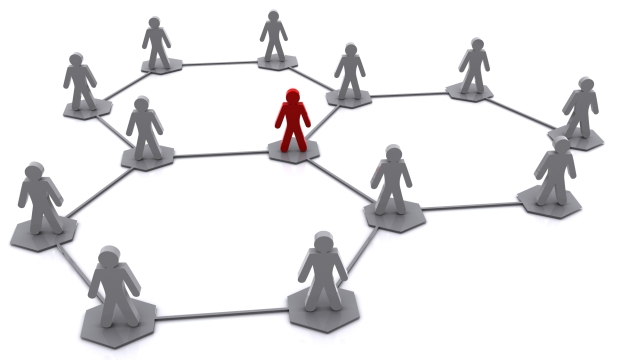
New connections can shock us into creativity
Originally posted on The Horizons Tracker.
Migrants are well known for their above-average entrepreneurial capabilities. While part of this productivity is due to a lack of familiarity and status in the local labor markets, there is also a strong element of the fresh thinking that they can bring to their adopted home, as they adopt the norms of their homeland to their new abode.
New research1 from London Business School highlights how a similar phenomenon occurs when we make new connections in our professional network.
“New ties bring a positive ‘shock’ that pushes individuals in the network to change the way they organize and process knowledge, as well as the way they interact and collaborate,” the researchers say.
Instability helps
The researchers argue that operating in stable environments can easily lull us into a creative rut, whereas the introduction of new people into our world can prompt us to look at the world with fresh eyes.
“If you have an open network, but it’s always the same people, it doesn’t work creatively. You need to change the composition and the stability of the network to remain creative. New people in the network spur creativity,” the authors continue.
The Petri Dish to test out the hypothesis was the Doctor Who television series, which has been broadcast in over 50 countries since its launch in 1963. The longevity of the show is helped in part by the ability of the Doctor to regenerate every time he (or lately she) is mortally wounded, such that the character has a different body, personality, and actor to play the role.
Creative team
The shows are made by three core groups of people: the producer; one or more directors; and one or more writers. It’s common for the producer to work on a number of episodes, but writers and directors rarely worked on more than one consecutive show, with the creative team continuously refreshed.
The researchers recruited a couple of television critics to review the episodes for creativity, with ratings given to the producer, the director/s, and the writer/s, before an overall creativity rating was given for the episode.
The results suggest that mixing up the key roles was vital to ensuring the long-term creativity of the show, with creativity at its highest when the network between the producer, the director, and the writer was open.
“Episodes with the seventh incarnation of the Doctor have a darker, secretive atmosphere, whereas episodes with the third incarnation are characterized by more down-to-earth, investigative plots. Similarly, episodes that include the aliens called Daleks often take place in war-ridden planets and sets, with a gloomier cinematography; whereas episodes that include the aliens called Time Lords take place in luxurious, sci-fi interiors, with a cinematography characterized by saturated colors,” the researchers explain.
Of course, introducing instability is often anathema to managers who thrive on stability. If we want our teams to be creative, however, then the example from Doctor Who suggests that a little bit of instability could be just the ticket.
“The more homogenous the opinions and behaviors in a network, the lower the chance of creative accidents. Highly interconnected people are drawn together by similarity in their opinions and behaviors, and socialize one another into even more similar opinions and behaviors,” the researchers conclude. “Breaking free from your usual ways is more likely when you are exposed to people whose opinions and behaviors are different from your own.”
Article source: New Connections Can Shock Us Into Creativity.
Header image source: Halacious on Unsplash.
Reference:
- Soda, G. B., Mannucci, P. V., & Burt, R. (2021). Networks, creativity, and time: staying creative through brokerage and network rejuvenation. Academy of Management Journal. DOI: 10.5465/amj.2019.1209 ↩






